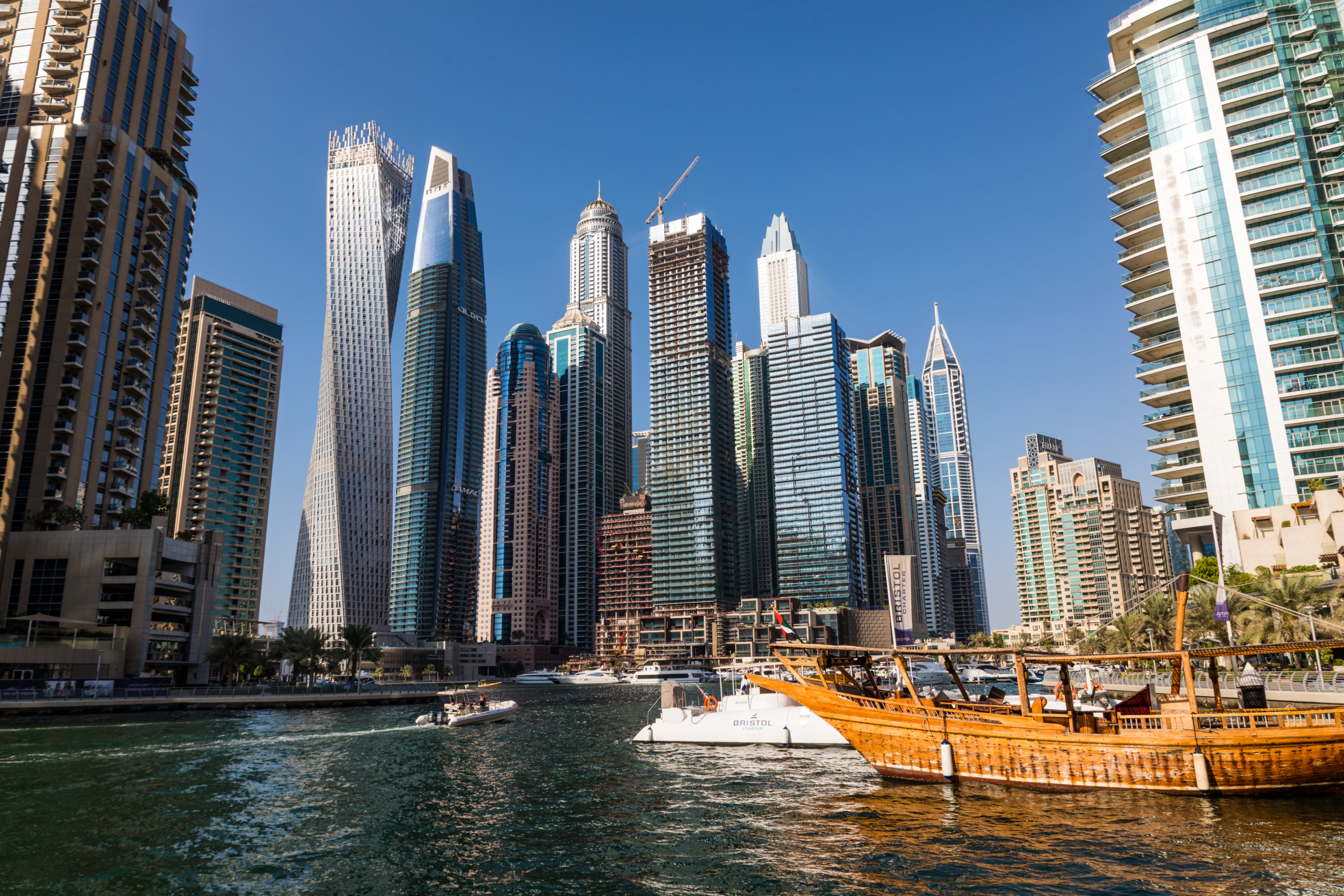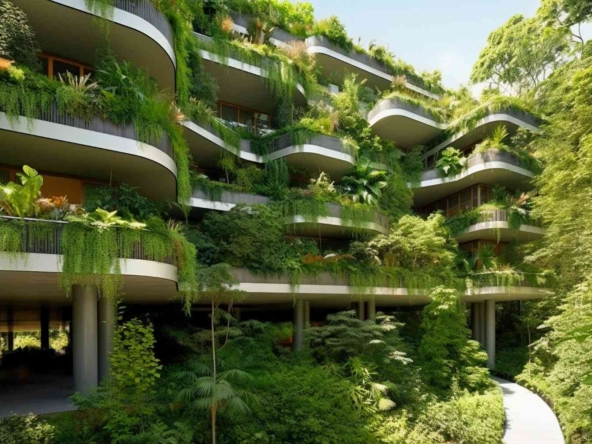Affordable housing is a buzzword that has been growing in prominence in the UAE’s real estate sector over the past few years. As the country continues to attract expatriates and investors, the question of how to provide affordable living options while maintaining the high standards of UAE real estate has become increasingly important. With the country’s expanding population and ambitious economic goals, affordable housing will play a crucial role in sustaining long-term growth and diversification.
But what exactly constitutes “affordable housing” in the UAE? How does it differ from luxury or mid-range housing? And more importantly, what are the real opportunities available for investors and residents? This article seeks to clarify the myths, explore the opportunities, and outline the future path of affordable housing in the UAE.
The Myths Surrounding Affordable Housing in the UAE
There are several misconceptions about what affordable housing means in the context of the UAE, particularly in cities like Dubai and Abu Dhabi, which are often associated with luxury and high-end developments. Understanding and dispelling these myths is essential to appreciating the opportunities that affordable housing presents.
1. Myth: Affordable Housing Means Low-Quality Housing
- Reality: Affordable housing does not mean compromising on quality. Developers in the UAE are increasingly focusing on creating housing options that are both cost-effective and well-designed, catering to middle-income earners. These properties often include modern amenities, quality infrastructure, and are located in well-planned communities.
- Case Study: Communities like International City in Dubai and Reem Island in Abu Dhabi have emerged as examples of affordable yet high-quality housing options that cater to mid-range buyers and renters.
2. Myth: Affordable Housing is Only for Low-Income Earners
- Reality: In the UAE, the concept of affordable housing extends beyond low-income earners. With a large expatriate population of professionals, middle-income earners are increasingly looking for housing options that suit their budgets. This includes young families, single professionals, and even entrepreneurs who are building their businesses in the UAE.
- Case Study: Developments such as Town Square Dubai offer affordable apartments and townhouses for middle-income residents without sacrificing on quality or lifestyle amenities, proving that affordable housing is not restricted to any one income bracket.
3. Myth: Affordable Housing is Far from Key Areas
- Reality: While it’s true that many affordable housing developments are located on the outskirts of major cities like Dubai and Abu Dhabi, these areas are rapidly developing into self-sustaining communities with schools, healthcare facilities, retail outlets, and entertainment venues. Affordable housing developments are now more connected and well-integrated than ever before.
- Case Study: Dubai’s Jumeirah Village Circle (JVC) is a growing community that offers affordable properties within close proximity to key areas like Dubai Marina and Downtown Dubai, thanks to improved infrastructure and transportation networks.
Opportunities in Affordable Housing for Investors
The affordable housing market in the UAE presents an exciting opportunity for real estate investors, particularly as the country seeks to diversify its economy and create more inclusive living environments. Let’s explore some of the key opportunities for investors in this space.
1. High Demand from a Growing Expat Population
- The UAE continues to attract a large expatriate workforce, with over 8.8 million expatriates residing in the country as of 2023. As these individuals and families settle in the UAE, the demand for affordable housing is only expected to rise.
- The country’s strategic initiatives to attract more foreign professionals through long-term visas and the Golden Visa program further fuel demand for affordable housing options, particularly for those looking to invest in their future within the UAE.
- Opportunity: Investors who focus on affordable housing developments in areas with growing expatriate populations, such as Dubai South or Sharjah’s Aljada, can expect consistent demand and long-term returns.
2. Growing Focus on Sustainability and Green Living
- There is an increasing emphasis on sustainability in the UAE, with the government pushing for more eco-friendly real estate developments as part of its Vision 2030 goals. Affordable housing developments that incorporate sustainable practices, such as energy-efficient buildings and green spaces, are becoming more attractive to eco-conscious buyers and renters.
- Opportunity: Investors can tap into the demand for green living by backing affordable housing projects that feature sustainable materials, energy-saving technologies, and efficient waste management systems. Not only does this cater to a growing consumer base, but it also aligns with the UAE’s broader environmental goals.
3. Higher Rental Yields in Emerging Areas
- While the more established parts of cities like Dubai and Abu Dhabi often come with a premium price tag, the outskirts and emerging areas present a different story. These locations offer more affordable property prices but still have the potential for strong rental yields as they develop and improve infrastructure.
- As more residents and families choose to settle in suburban areas due to lower costs, demand for rental properties is increasing. This creates an opportunity for investors to capitalise on higher rental yields in these growing communities.
- Opportunity: Locations like Dubai South, Nshama’s Town Square, and Abu Dhabi’s Al Reef are known for providing relatively affordable housing with rental yields upwards of 6-7%, making them attractive options for investors looking for steady income.
Affordable Housing: A Critical Need for UAE’s Economy
Affordable housing is not just about providing cheaper homes. It is a crucial factor in ensuring that the UAE remains a competitive and attractive place for professionals, businesses, and foreign investors. Here’s why affordable housing is essential for the UAE’s economic growth:
1. Attracting and Retaining Talent
- The UAE’s ability to attract foreign talent has been one of the key drivers of its economic success. However, the rising cost of living, particularly in cities like Dubai and Abu Dhabi, has made it challenging for some professionals to justify long-term relocation. Affordable housing options can help address this issue by providing reasonable living costs without compromising on quality.
- With the rise of remote work and global mobility, offering affordable housing to expatriates ensures that the UAE remains a top choice for talented professionals looking to work in the region.
- Impact on Economy: By providing affordable living options, the UAE can continue to attract a highly skilled workforce, contributing to its economic growth and diversification.
2. Supporting the Growth of SMEs and Startups
- The UAE government has placed significant emphasis on fostering a thriving SME (small and medium enterprise) sector, recognising it as a crucial part of the economy. For entrepreneurs and small business owners, affordable housing is a key factor in keeping operational costs manageable.
- Offering affordable residential options close to business hubs ensures that startups and small businesses can thrive without the burden of excessive rental costs, allowing them to reinvest in their ventures and contribute to the local economy.
- Impact on Economy: Supporting SMEs through affordable housing strengthens the economy by driving innovation, job creation, and investment in various sectors.
3. Reducing Socioeconomic Inequality
- Affordable housing plays an essential role in reducing socioeconomic inequality by providing opportunities for lower and middle-income residents to access quality housing. This contributes to a more inclusive society where individuals from various income brackets can enjoy a good standard of living.
- As the UAE moves towards a more diversified economy, ensuring that affordable housing is available to a broad spectrum of the population is key to maintaining social stability and ensuring equitable growth.
- Impact on Economy: Reducing inequality through affordable housing promotes social cohesion, which is vital for long-term economic development and sustainability.
The Path Forward: Government Initiatives and Future Trends
The UAE government has already recognised the importance of affordable housing and has introduced several initiatives to encourage the development of more cost-effective residential options. Looking forward, both the public and private sectors will play a crucial role in expanding access to affordable housing.
1. Government Initiatives
- The UAE government has introduced various policies aimed at encouraging affordable housing development, particularly in Dubai and Abu Dhabi. For example, in Dubai, the Real Estate Regulatory Agency (RERA) has introduced incentives for developers who build affordable housing units. Additionally, government housing schemes such as the Sheikh Zayed Housing Programme offer financial support to Emirati nationals.
- Future Trend: Expect more government-led initiatives focused on making affordable housing a key part of urban development plans. Partnerships between public and private sectors will become more common as the government seeks to address growing demand.
2. Increased Focus on Urban Planning
- As cities like Dubai and Abu Dhabi continue to expand, there will be an increased emphasis on developing affordable housing within well-planned urban environments. This means that affordable housing projects will no longer be confined to the outskirts but integrated into larger master-planned communities with access to schools, healthcare, and transportation.
- Future Trend: Developers will increasingly focus on mixed-use developments that combine affordable housing with retail, leisure, and educational facilities, creating self-sustaining communities that offer a high quality of life at a lower cost.
3. Rise of Modular and Prefabricated Housing
- To meet the growing demand for affordable housing, there is likely to be an increase in the use of modular and prefabricated construction techniques. These methods are faster and more cost-effective, allowing developers to build affordable housing units quickly while maintaining quality.
- Future Trend: Modular housing will become a popular option for developers seeking to balance affordability with efficiency, particularly in emerging areas where construction costs can be reduced.
In Conclusion
Affordable housing in the UAE is not just a fleeting trend but a critical need for the future. As the country continues to grow and diversify, providing high-quality, affordable living options will be key to maintaining its status as an attractive destination for foreign talent, investors, and residents. For investors, the affordable housing sector offers numerous opportunities for growth, with strong demand from expatriates, higher rental yields in emerging areas, and a focus on sustainability.
By addressing the myths surrounding affordable housing and understanding the true potential of this market, investors and developers can play a pivotal role in shaping the future of the UAE’s real estate landscape.




